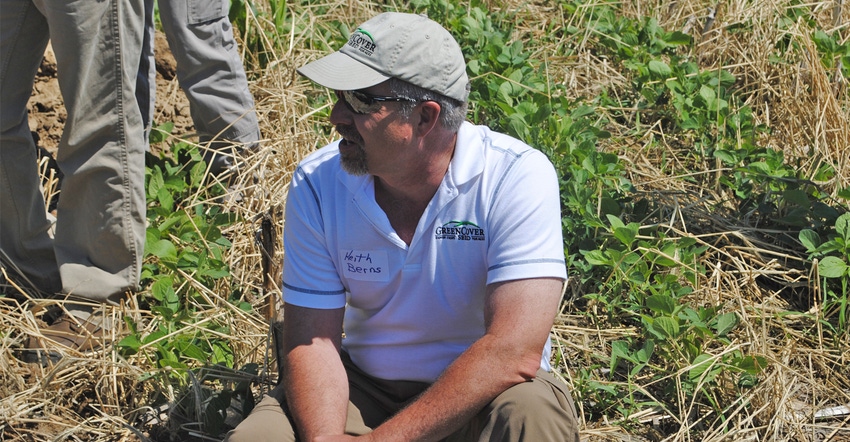December 4, 2018

There is a movement underfoot, literally. It's called soil biology, and it consists of billions of living microbes and little critters we can't see. Thanks to some thought-provoking research and in-field observations from farmers, soil scientists and other researchers who care about soil health, we are understanding the very living nature of our soil better these days. This knowledge has led to the growth and wider acceptance of a new, yet ancient, idea called cover crops.
This movement, both underground and aboveground by farmers, is presented quite well in the new film, “Living Soil,” sponsored in part by the Soil Health Institute and directed by Chelsea Wright.
When you watch this film, available at livingsoilfilm.com, you are treated to an introductory narrative from Bladen, Neb., farmer, Keith Berns, who farms and operates Green Cover Seed with his brother Brian and their families.
In the film, Berns talks extensively about his "carbonomics" understanding of how soil biology works, in his grain and cover crop fields, and operations on the Berns family farms. Producers featured in the film are farming across the country, raising crops conventionally and under no-till, organically and in a Community Supported Agriculture farm.
This diversity in operations brings home the idea that soil health is not just something that farmers working under specific scenarios need to look at, but also something for everyone, including backyard farmers and the largest of the large conventional farmers. The thread that ties it all together is getting a living root in the ground as long into the growing season as possible through cover crops.
Cover crops are not a new idea that we just discovered. In the old days, farmers would drop a handful of radish or turnip seed on the fender of their tractor during summer cultivation. The seed would bounce off the fender, germinate and grow extensively after the crop was harvested, providing late-fall and early-winter grazing for cows.
When we were still cultivating, we rigged up an ATV seeder on our Buffalo cultivator to spread brassica seed that would germinate and grow between the cornstalk rows, to provide late-season grazing for our cow herd into the winter months.
The thing that has changed in the past decade or so is our appreciation for soil health. I guess that's why this film opens with black-and-white photos from the Dust Bowl era, when fencerows drifted with blowing dirt, and dust was in the air almost every day.
With a voice narrative of President Franklin D. Roosevelt talking about the importance of protecting the soil in those days, it drives home the idea that this has been a continuous struggle for farmers tilling the soil in arid climates for generations.
The point driven home in this film is that major progress is being made. The number of acres of cover crops has expanded. I would go so far as to say that "cover crops" is now a catch phrase that resonates with farmers across the country.
Ten years ago, when the Berns family began their research into cover crops, the term wasn't on the radar of most farmers like it is today. Admittedly, there is still much to learn when it comes to timing of planting, cover crop seed mixtures that work best for specific goals and how to best monitor soil biology. But there is no doubt that the movement is growing, thanks to an awareness by farmers, trials and education from researchers and farmers like the Berns brothers and their families, and from films like “Living Soil.”
You May Also Like




